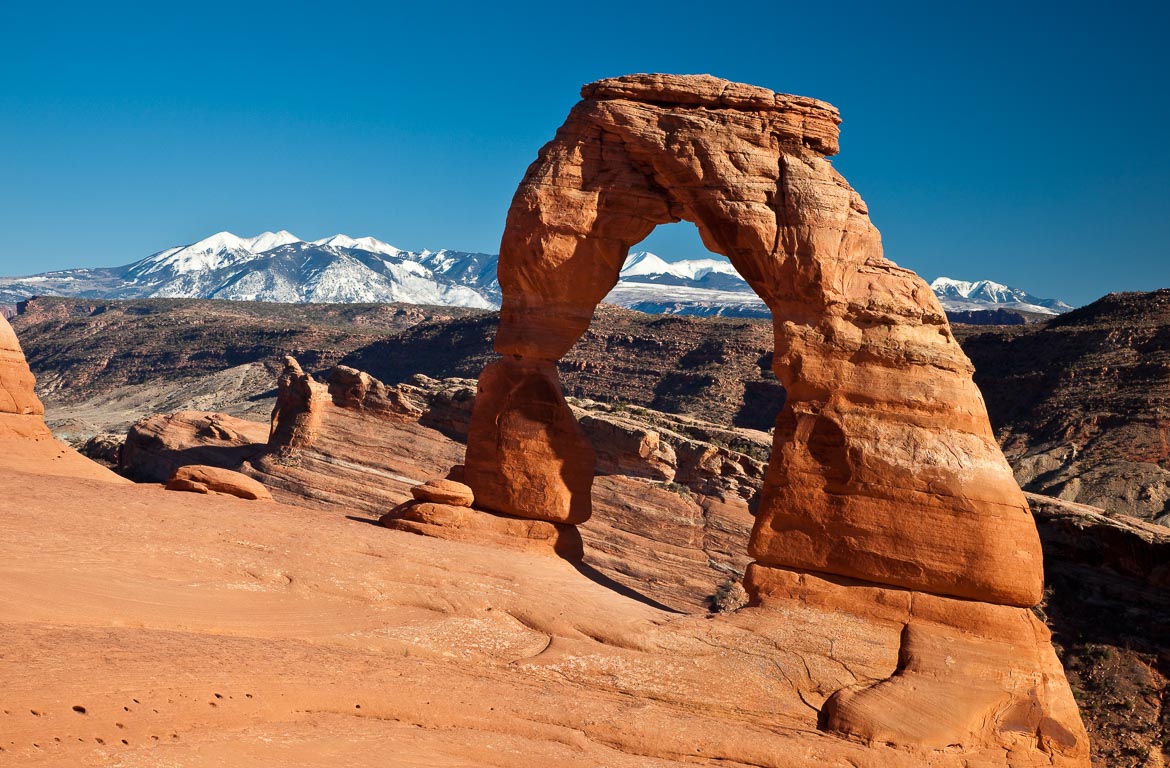Overview
Around a third of all landmass on the globe is desert and then the polar regions are not included, although Antarctica closer to the south pole in reality is a desert with very little precipitation. The deserts are spread all over the world in all continents except Europe. The image of the desert that immediately comes to mind is the windblown sandy deserts of Sahara and the Arabian Peninsula. But in reality only about 14% of all deserts are covered by sand dunes.
I have decided to present my photos according to the type of landscape divided into four galleries starting with Mountains and Rocks and followed by Sand Dunes. Then I show Canyons, Rivers and Gorges, where rivers and streams have cut deep canyons into the soft sandstone and limestone and finally the Hamadas, Punas and Steppes, with an exciting mixture of the monotonous and the colourful.
Mountains and Rocks
I start with the fascinating scenery of the largest sandstone plateau in the world, the Colorado Plateau, stretching across southern Utah and northern Arizona but also covering parts of Colorado and New Mexico. To form sandstone Nature needs sand. The sand was deposited by the seas that covered much of this area 300 million years ago. When the seas withdrew the sand deposits were left. The blowing sand piled up into enormous sand dunes, and the wind formed intricate wave patterns in the sand.
But for sand to be cemented into sandstone Nature needs a binding material. The climate changed many times. Seas intruded again and brought lime and iron and other materials that bound the sand grains together into the porous and easily eroded sand stone we see today. Different layers of sandstone take their colours and character from the different binding materials, but also from the patterns created by the wind forming the original layers (see e.g. image no 14 in the gallery below).
Underneath the sandstone formations tectonic plate movements and volcanic activity forced the sandstone plateau to rise more than 3,000 metres in the last 15 million years. The Colorado Plateau was formed.
The Atlas Mountains in northern Africa were formed when the land masses of Europe and Africa collided and also much earlier when the African and American plates collided. The High Atlas Mountains and the Anti Atlas chains extending 2,500 km across North Africa are situated in Morocco and Algeria They are the northern boundary of the Sahara Desert. The highest peak reaches 4,000 metres into the sky (in Morocco). The Atlas Mountains consist of layers of limestone and sandstone and similar patterns and colour variations can be seen here as on the Colorado Plateau (see e.g. image no 15 and 17 in the gallery).
Tsagan Survaga painted Cliffs in the Gobi Desert in Mongolia shows the same beautiful colour variations in its sandstone cliffs (images 25 and 26 in the gallery) and so does Quebrada de la Conchas in northwestern Argentina, which also was a sea bottom but is raised to 1,500 above sea level. The wonderful colours of those mountains and those of Cierre de los Siete Colores in Salta Province in Argentina are due to different minerals mixed with the sandstone and lime.
Further up into the Andes in South America we reached more than 5,000 metres altitude in the mountain range that is straddling Argentina, Chile and Bolivia. The Andes has been formed by tectonic processes around 45 million years ago, when the Pacific plate was uplifted at its eastern end. The whole mountain chain is about 9,000 km long. The northern part along the borders of Peru and Chile, Bolivia and Argentina is a desert to the west of the peaks and along the high level plateaus, the Altiplano.
The Andes is the longest continental mountain chain in the world. It has many both active and dormant volcanos rising above the Altiplano-Puna plateau and geysers are present both in Chile and Bolivia. The different mineral deposits and the thermal activity and tall volcanoes create a dramatic landscape, and Jennifer and I felt it was one of the most fascinating and dramatic we had seen and photographed.


